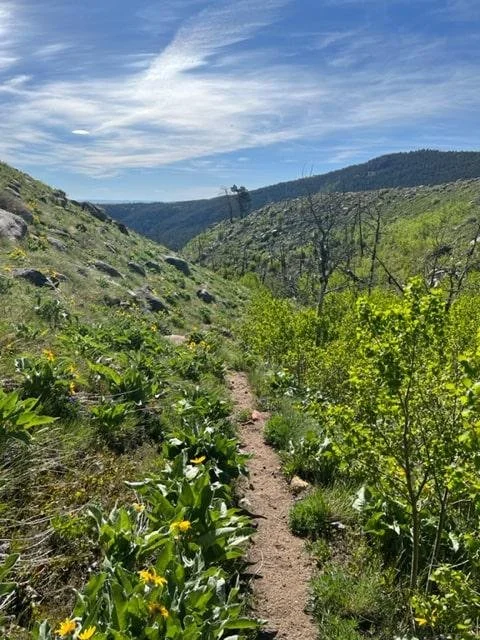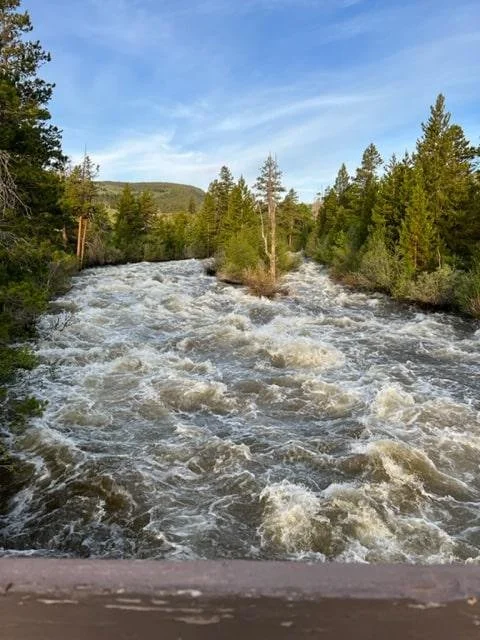How to Handle a DNF and Bounce Back Stronger
Dropping out of a race is a hard choice to make and accept. Learning how to handle a DNF is part of the racing experience for many runners.
A few months ago I attempted to run the Sinks Canyon 50k in Lander, Wyoming as part of my quest to run a marathon or longer in all 50 states. By this time I had already done 10 race weekends back to back across the country. I knew the race was going to be challenging. Since this race was at the end of my 11 weeks of races scheduled, I didn’t properly prepare for the race.
I did run some long trail races with plenty of hills to prepare, but none of them were at as high of an elevation as this race course. They also didn’t have as much elevation gain. It wasn’t until 5-6 days before the race that I went back to the race website to review the elevation profile of the race and saw that there was a steep climb at the beginning of the race and that most of the climbing would be within the first 20 miles.
I also tend to be a back of the pack runner and I’m constantly worrying about cut off times for the finish line and aid stations. Some races only have a finish cut off time and are a bit generous about letting runners get an official finishing time even after the cut off. However, if they have aid station cut-offs they may not be as generous about letting you finish—especially if you miss an aid station cut-off.
Unfortunately, I didn’t realize there were aid station cut-offs for this race until I was at packet pick-up the day before the race. But that was my fault. I should’ve been better about doing my homework and fully researching the race information.
I did start to get nervous about the aid station cut-offs and made the mistake of eating too much pizza and having a few beers to calm down the night before the race. BIG mistake!!
On the morning of the race, I tried to calm myself down. “I’m here to enjoy the day! I’ll do my best to finish. All I can do is my best.”
The morning weather was great! Chilly, but not too cold. Beautiful views of the canyon and surrounding area.
After the pre-race announcements, we walked a few feet to the official starting line and then we were off!
I don’t know what it is about Wyoming, but the blue skies are bluer and the trees and grass are greener.
As we approached the start of the big climb the race director was cheering us on as we started climbing and reminded us to enjoy the day.
I was definitely not prepared for these climbs! We traversed a few miles of switchbacks and some sections that felt like straight uphill climbs. At Sinks Canyon, we started the race at around 6,000 ft altitude and climbed to about 9,000 ft altitude within the first 6 miles of the race. But the views up there were beautiful!
If you’re not acclimated to the altitude (like I wasn’t that day) climbing that many feet within that short amount of mileage at that altitude is brutal! It will wipe you out quickly—especially if you’re not hydrating and eating properly—and give you altitude sickness.
After the first big climb, I noticed that I had some mild symptoms of altitude sickness. I was able to keep moving, but I was moving pretty slowly.
By the time I reached the first aid station with a cut-off time, I had SOME time to spare but not much (maybe 30-40 minutes).
It was starting to heat up that morning and we were on our way through another big climb and would have lots of hills between the mile 12 aid station and mile 20 aid station. I felt ok leaving the mile 12 aid station, but after some time the combination of heat and altitude sickness got to me and started to really slow me down.
I tried to power hike the uphills, but that quickly turned to a slow, death march. I tried to run the flats and down hills, but every time I tried to run, I just couldn’t keep at it for more than a few seconds.
The last 6 miles to the next aid station were brutal! I knew I was falling too far behind and wouldn’t make the aid station cut-off and would most likely be pulled out of the race. About 3 miles from the aid station, I passed by one of the Search and Rescue volunteers for the race and was asked if I knew if anyone was behind me. There was one girl I knew was close by, but I wasn’t sure if she was still behind me or if she dropped out at the next aid station.
By this time, I knew I was one of the last (if not THE last runner on this section of the course). I had already let my mind quit and my body was falling closely behind. When you’ve already decided you’re done in a race, it is pure agony to push yourself to keep going those last few miles to get to an official aid station where you can drop out.
With trail races, the only way to get a ride back to the start/finish area is to drop out at an aid station where there are volunteers available to give you a ride back. You can’t just drop out of the race in the middle of the trail. So a lot of times you’re pushing yourself past your quitting point just to be able to get home.
Those last 3 miles ticked away so slowly. I tried to stay hydrated and tried to at least eat some energy gels, but it was hard to take those down with how nauseous I was. Since I let myself quit mentally, it made my physical symptoms worse.
When I FINALLY got to the 20 mile aid station, I immediately let the volunteers know I was dropping out of the race and asked for a ride back. There were still a few unaccounted for runners on the trail so I waited with them while they communicated with incoming SAR volunteers to compare lists of who was out on the course and who dropped out.
In the meantime, I got to sit down and felt better after drinking a few cups of electrolytes and eating some chips. At first, I felt so down on myself for giving up and dropping out of the race. Then the SAR volunteer I met on the trail came in and said he was surprised I made it all the way to the aid station. He said I wasn’t looking too good when we met up, but he was glad I made it. That was when I knew I made the right decision for myself to stop.
Making the decision to drop out of a race is never easy. It’s easy to get consumed with guilt and disappointment. But it’s important to listen to your body and know when you’ve reached your limit.
There’s a race director in Colorado who says “DNF stands for Did Nothing Fatal. We want you to live to race another day.” That’s very important to keep in mind. If you drop out of a race, you can always come back and try again. But if you push yourself too far when you’re injured or dehydrated, it may remove you from the running scene for a long time or even for good.
After I got back to the AirBnB, I showered and had some time to eat and rest, I felt good about my decision to drop out. I realized I did what was best for my health at that time. Plus I was scheduled to run a 50 miler in Colorado a month later and was glad I was still in good enough health to participate in that race.
Another positive from the DNF was that it taught me a lot about long trail races that I was able to take with me to my next race. I learned that I need to get out of my head when it comes to cut-off times. If I obsess over cut-off times too much, I’m not enjoying the race as much. I also tend to quit mentally before my body is ready to quit. I also learned that I need to properly adjust to altitude if I’m racing at high altitudes. This includes staying on top of my hydration and nutrition from the very beginning of the race instead of trying to catch up on calories when I feel sluggish.
All in all, yes it was disappointing to quit. BUT I still got a great training run in, I learned a few important lessons about racing and I got to spend most of the day enjoying the beautiful scenery of Sinks Canyon.





